Engineering Planning Division
Research & Development Center
Research & Development Unit
YANMAR Technical Review
Research & Development Center Celebrates the 60th Anniversary
1. Introduction
With the aim of developing technology and products with a long-term outlook and expanding its buisiness, the research section of the engineering department at Yanmar's Kanzaki Plant (subsequently renamed Amagasaki Plant) was relocated to Urae in Oyodo-ku, Osaka in April 1956. In November of that year, the research section was split off from the engineering department and established as Yanmar's research center. This was the birth of the Research & Development Center that this year celebrates its 60th anniversary.
Since its establishment, the Research & Development Center has contributed to improvements in Yanmar's technology by operating as a specialist organization working on the basic and applied research that underpins the company's products and services.
Yanmar has maintained its own centralized research facility since 1956 despite the trend in recent years toward fewer companies operating large in-house research centers as technology has become more advanced and diverse. This is a demonstration of the company's recognition that having a central research organization play a central role in technology development is essential to overcoming the challenges that customers face and delivering value that exceeds their expectations over the long-term.
This year Yanmar has adopted "A SUSTSAINABLE FUTURE" as its new brand statement about using technology to deliver new prosperity. The company intends to continue developing new technologies at the Research & Development Center to help its customers enjoy a prosperous future.
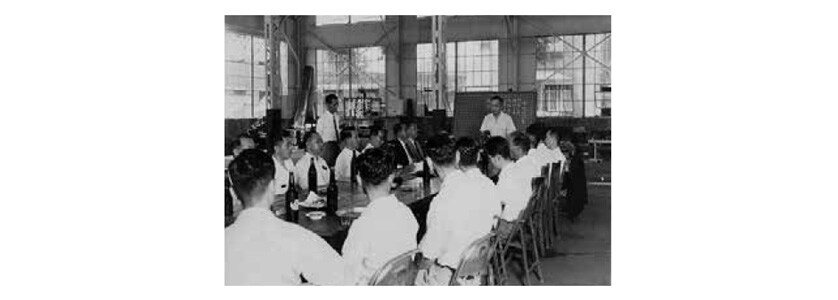
2. History of the Research & Development Center
Fig.1 shows the history of the Research & Development Center events, its background and aim from 104 years Yanmar history.
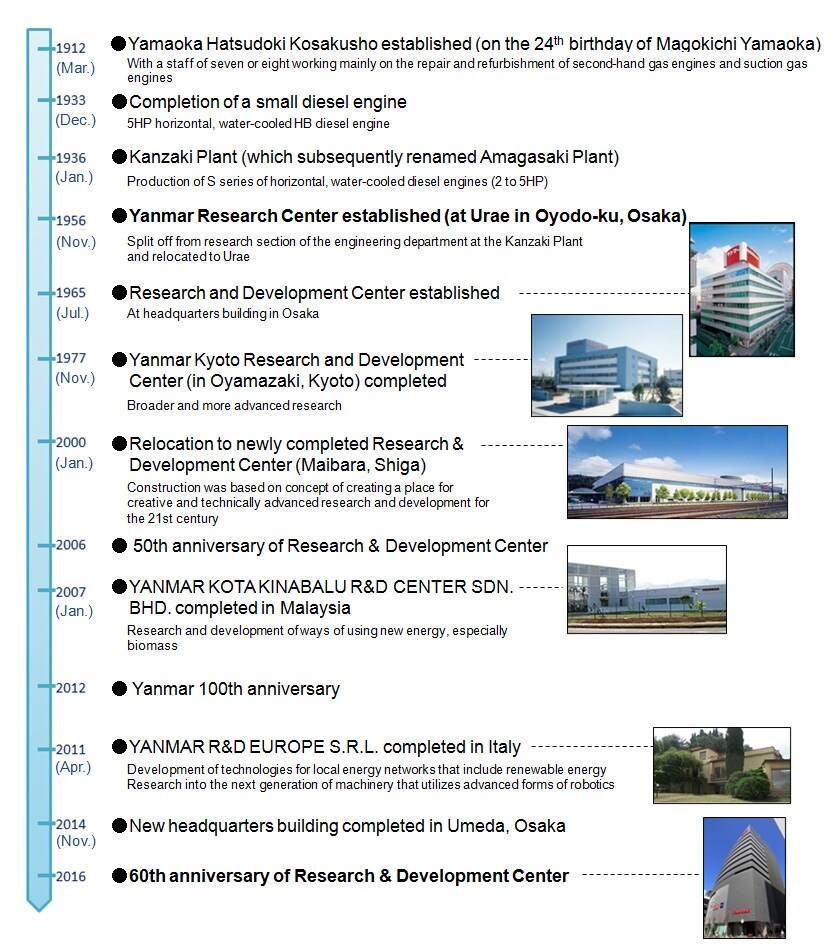
3. Evolution of the Research & Development Center
3.1. History of Engine Research
Throughout its history, one of the core missions of the Research & Development Center has been the development of combustion control, reliability, and other technologies for diesel engines, Yanmar's core product.
The First Oil Crisis that struck in October 1973 made energy efficiency an important concern throughout society, with strong demand for improvements in the fuel economy of diesel engines. In response, direct injection engines became a key focus of research and development. Achieving a uniform distribution in the fuel injected into the combustion chamber required optimization of the number and layout of injection nozzle holes and Yanmar developed technology for direct injection through a process of trial and error that included work on the shape of the combustion chamber as well as developing a swirl test apparatus and evaluation techniques. Through this work, Yanmar helped achieve significant improvements in fuel economy by successfully applying direct injection to small and medium-sized diesel engines. This research into fuel economy still continues and Yanmar has achieved class-leading fuel-efficiency across all output ranges.
Since 1970, in contrast, nations around the world have been progressively introducing and tightening exhaust emission regulations, beginning with the US Clean Air Act (the "Muskie Act"). Along with the work on fuel economy described above, Yanmar has established technology for compliance with exhaust emission regulations, successfully commercializing products in the various business fields in which it is active and that are among the best in their class.
To comply with the EPA (US Environmental Protection Agency) Tier 1 and Tier 2 exhaust emission regulations for small diesel engines (introduced in 1998 and 2004 respectively), Yanmar developed electronic control techniques and a mono plunger (MP) distributor type pump that uses a single plunger to minimize inter-cylinder variation in the amount and timing of fuel injection. Exhaust gas recirculation (EGR) technology was subsequently developed for compliance with EPA Tier 3 regulation (introduced in 2008). For EPA Tier 4 regulation (introduced in 2013), Yanmar adopted a common rail system (CRS) with full electronic control and developed an exhaust gas after treatment system.
Regulation of medium and large marine diesel engines is covered by IMO (International Maritime Organization) Tier 1, Tier 2, and Tier 3 (introduced in 2005, 2011, and 2016 respectively). To comply with these, Yanmar developed technology that uses selective catalytic reduction (SCR) to reduce NOX. The energy efficiency design index (EEDI) for indicating the level of CO2 emissions has been introduced for vessels built from 2013 onwards and is used as the basis for regulation of CO2 emissions. To satisfy these requirements, Yanmar has developed the ASSIGN (Available Space Scattering Injection Geometric Nexus) combustion technique, Miller cycle, and dual-fuel and marine gas engines that use natural gas as a fuel for vessels.
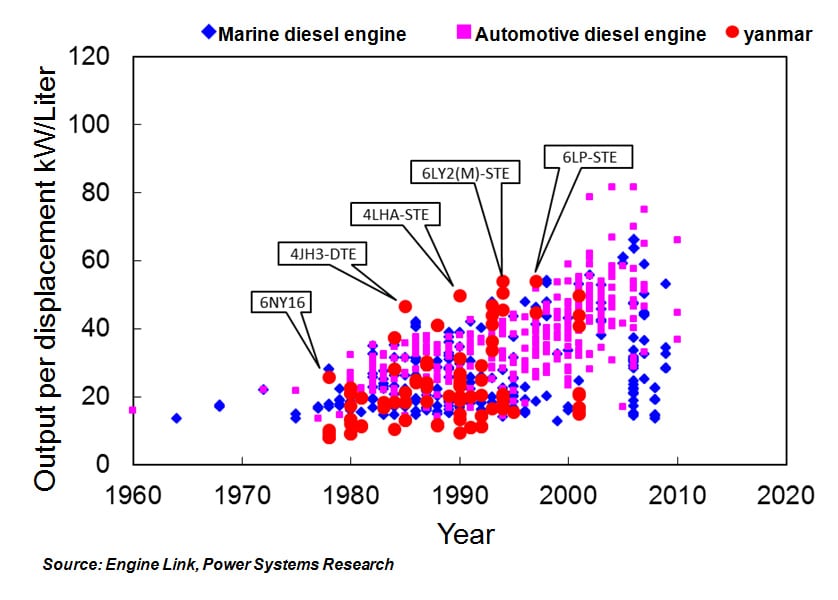
Along with the improvements to fuel efficiency and emissions described above, the output of diesel engines also needs to be improved so that they can be made smaller and lighter. In terms of output, Yanmar engines have always remained among the best in the industry. Fig. 2 shows how the output of diesel engines relative to their displacement has changed over time.
To achieve this improved output, the Research & Development Center has also been putting its energy into building reliability technology.
The rapid development of computers made numerical analysis using the finite element method (FEM) a viable technique in the 1970s. Yanmar was an early adopter of this practice and applied it to numerous products, putting it to practical use by utilizing stress analysis to study the strength of pistons, cylinder blocks, and other engine components.
FEM analysis of three-dimensional shapes became possible in the 1990s. Yanmar has taken advantage of its ability to calculate and evaluate strength and stiffness at the design stage to optimize structural designs and shorten development times, even for components with comparatively complex shapes. Work on improving the reliability of engine components has been undertaken through a repeated cycle of using numerical analysis techniques like these together with experimental verification to provide feedback to a numerical analysis model.
3.2. Work on Electronic Control
Being quick to recognize the importance of electronic control, Yanmar has kept pace with the progress of technology in the world at large by taking active steps to incorporate electronic control into its products.
In September 1981, Yanmar became the first in the industry to establish a control technology research department (the present day Electronic Control Development Division) (see note 1) as an independent department for studying mechatronics. Mechatronics in those days was used to improve the performance of agricultural practices through techniques such as attitude control, with steady progress being made on research and development in competition with other companies in the field.
In the tractor business, in 1981 Yanmar launched new products one after another, each equipped with advanced functions made possible only by electronic control, such as "auto-rotary," which automatically controls the tillage depth, and "UFO-matic," which keeps the machine horizontal when working in paddy fields. These functions allowed practically anyone to do farm work, which till then depended on farmers' intuition, with very simple operation. Regarding combines, the TC2200 was launched in 1978. It was equipped with devices for automatic cutting-height control and automatic threshing depth control, as well as row-sensing automatic guidance control. The combine became a big hit not only in Japan but also in Taiwan.
Mechatronics was not used just in farm equipment. Its application was further extended to transmission control, fuel injection control, remote control for vessels, as well as products in new fields. Now, rather than the automation of specific functions, the trend is toward coordinated control of multiple functions by taking advantage of advances in information and communications technology and improvements in software engineering made possible by the growing sophistication of microprocessors. Yanmar is also working to deliver new forms of value that extend beyond the performance of the machinery itself, such as the use of information technology to provide more advanced user interfaces or services that make use of equipment operation data.
In this way, the Research & Development Center has been able to treat the incredibly rapid advances in electronic control as a source of product value, and to focus on technology development and ensure timely development by operating as a unified central research center (see note 1). It is also seeking to enhance the operations of the entire Yanmar group and make them more efficient by deploying the functions it develops on other group products.
- Note 1:Electronic Control Development Division under Research & Development Unit separated from R&D Center on 1st of October.
3.3. Recent Activities of the Research & Development Center
As Yanmar's businesses have expanded, the Research & Development Center has extended its technology development work to cover a wider range of industries. Following its relocation to Maibara in 2000, the center has also engaged in work on machinery and energy systems as well as on engines and electronic control.
Yanmar has also established research facilities overseas with the aim of creating a global research and development system.
The Yanmar Kota Kinabalu R&D Center Sdn. Bhd. (YKRC) was established at the Kota Kinabalu Industrial Park in Sabah, Malaysia in January 2007 to serve as a new Asian research center. YKRC undertakes research and development of ways of using new energy, especially biomass. Yanmar is accelerating the pace of its work on creating a sustainable future by taking the lead in finding effective ways of using energy amid environmental and resource depletion problems.

Yanmar Group's first research and development facility in Europe, Yanmar R&D Europe S.R.L. (YRE), was established in Florence in the Tuscany region of Italy in June 2011. YRE is collaborating with local universities and other companies and research institutions to work on medium- and long-term research projects in the following two fields.
- 1) Energy technology: Development and verification testing of technologies for local energy networks that include renewable energy
- 2) Machinery technology: Research into the next generation of machinery that utilizes manipulation, human-machine interfaces (HMIs), and other advanced forms of robotics

3.4. Future Activities of the Research & Development Center
In 2016, Yanmar adopted “A SUSTAINABLE FUTURE” as its brand statement. The aim is to create a sustainable society through technology that is based on the concept of realizing the maximum prosperity using the minimum resources. To achieve this sustainable future, the Research & Development Center intends to focus in future on developing technologies in the following five categories.
- Y-Energy: Optimum energy supply with minimum environmental impact
- Effective use of diversified energy
- Clean energy production
- Higher efficiency & performance
- Y-Robotics: Maximum work with minimum manpower
- Labor-saving & high efficiency
- Safer work
- Y-Cultivation: Minimum impact cultivation of the highest quality food
- Pioneering advances in agriculture & aquaculture
- High yield & high quality
- Environmentally sustainable food production
- Y-Experience: Maximum excitement through advanced solutions
- Efficient high quality services
- Quality leisure time
- Y-Quality: Maximum reliability and comfort with minimum bother
- Downtime-free
- Stress-free operation
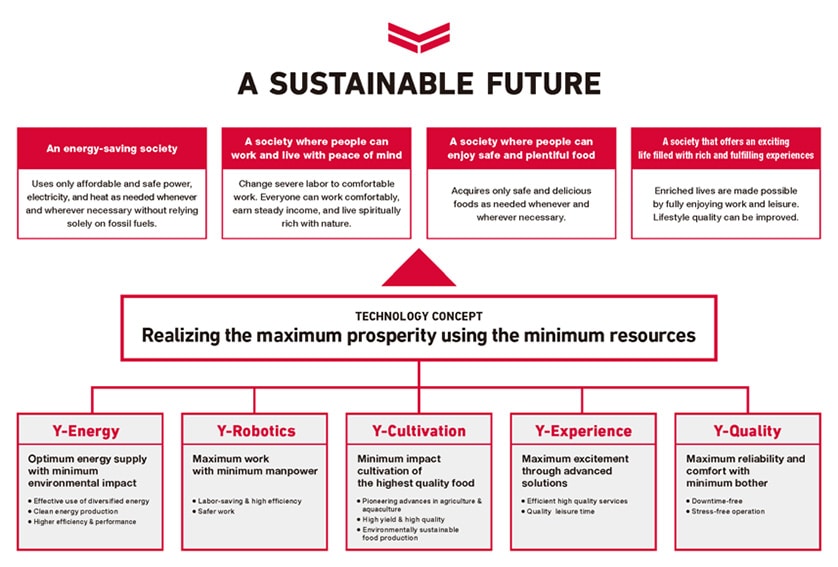
4. Conclusions
Having celebrated the 100th anniversary in 2012, Yanmar is embarking on new initiatives aimed at creating a prosperous society through the next hundred years. As part of this process, the Research & Development Center intends to continue developing technology for "realizing the maximum prosperity using the minimum resources," while also redoubling its efforts and helping to deliver prosperity and a forward-looking society by overcoming the challenges customers face.
-IMPORTANT-
The original technical report is written in Japanese.
This document was translated by Research & Development Management Division.
Author
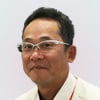
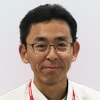
Engineering Planning Division
Research & Development Center
Research & Development Unit
Hajime Nakamura
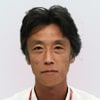
Engineering Planning Division
Research & Development Center
Research & Development Unit